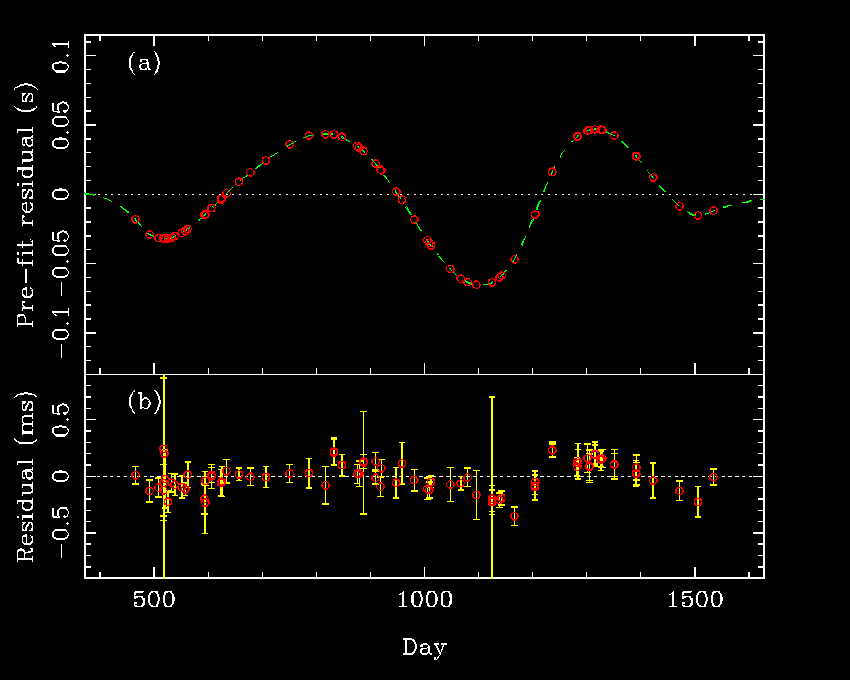Optimal Interpolation and Prediction in Pulsar Timing Achieved
For pulsar projects, it is necessary to predict the pulse phase in advance, for example, when preparing for new observations. Furthermore, interpolation of the pulse phase between existing measurements is also a must-have when folding X-ray or gamma-ray observations according to the radio pulse phase. So far, these procedures have been done using various ad hoc methods.
Recently, Dr. DENG Xinping from National Space Science Center (NSSC), Chinese Academy of Sciences, along with colleagues from University of California and CSIRO Astronomy and Space Science, Austrilia, developed a novel method. The optimal method shows how to interpolate or predict the pulse phase using statistical models of the various noise processes and the phase measurement uncertainty.
The theory of optimal interpolation and extrapolation of stationary time series was first discussed by Wiener and the corresponding algorithm became known as a Wiener filter. However, normal Wiener filters are not applicable to pulsar timing residuals, because the measurement uncertainty is not stationary and the sampling times are irregular. Moreover, Wiener filters are maximum likelihood estimators (MLE) and one can obtain an MLE for pulsar timing residuals directly as shown below if we know the covariance of the red and white noise processes. This is effectively a generalised Wiener filter.
In the presence of red timing noise, it is recommended that the MLE method be used to model, interpolate or extrapolate pulsar timing noise. It is applicable even under extreme conditions, such as very steep red spectra, very large gaps and/or highly variable ToA uncertainties. No other linear unbiased interpolator or extrapolator can have lower variance than the MLE, provided that the covariance matrix is correct.
The research result entitled Optimal Interpolation and Prediction in Pulsar Timing was published in Monthly Notices of the Royal Astronomical Society (MNRAS), one of the world's leading primary research journals in astronomy and astrophysics.

Fig. 1: Optimal interpolation and prediction in the timing residuals of Vela pulsar (Image by NSSC)


